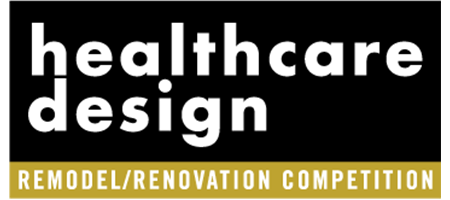
Gina Rivera (Headshot: Courtesy of Professional Women in Construction New York)
The New York chapter of Professional Women in Construction (PWC-NY) recently hosted a Healthcare Forum, bringing together top industry professionals to examine current healthcare design and construction projects as well as to discuss the vision for the future of the sector.
The panel included Suzen Heeley, executive director of planning, design, and construction at Memorial Sloan Kettering Cancer Center (New York); Tina Macica, associate vice president of design and construction at Montefiore Einstein (New York); Suzanne Musho, corporate director at NewYork-Presbyterian Hospital (New York); and moderator Raquel Diaz, vice president, market sector leader from Gilbane Building Company (New York).
Here’s a recap of panelists’ discussion:
Interior design trends in healthcare
Diving into current trends, Tina Macica of Montefiore Einstein says she’s seeing the integration of more sustainable products that truly stand the test of time, given the requirements and costs to renovate healthcare facilities. Other trends in healthcare include timeless design with a mix of warm and cool palettes.
“I hope that design and integration of medical equipment can eventually result in use of a smaller footprint, eliminating visual clutter and minimizing noise,” Macica says. “This would benefit patients and their families and address caregiver fatigue from such sounds as unnecessary alarms, for example.”
Macica explains that there are also regulatory requirements that are unique to healthcare facilities, which require certain design features. For instance, complex heating, ventilation, and air conditioning (HVAC) designs and spaces that are regulated for certain approved uses.
Suzanne Musho of New York Presbyterian concurs. “Healthcare design is an amazing opportunity to conceive spaces that heal, repair, and restore. The excellence of care that patients receive within the walls of hospitals should be architecturally evident the moment patients and their families and friends enter hospitals,” she says. “The added complexity of healthcare as it relates to performance and technical requirements presents even more possibilities to challenge convention and traditional archetypes.”
Using design to support healthcare’s operational, financial needs
Healthcare design priorities include flexibility, safety, durability, infection control, and return on investment (ROI), notes Suzen Heeley of Memorial Sloan Kettering.
“The pace of changes in healthcare has accelerated and we must react more quickly,” she says. “Speed to market is more important than ever, while pressures on revenue and financial sustainability are driving the need for creativity in developing revenue opportunities, designing in flexibility that doesn’t impact operations and revenue.”
Additional trends in healthcare design and construction that she sees are:
Climate change/resiliency: As extreme weather events occur more frequently, hospitals have focused on constructing more resilient buildings. Even in non-coastal areas, healthcare facilities are now being built to withstand 150-plus mph wind loads and 1,000-year flood elevations, in lieu of 100-year measurements as in the past.
In fire-prone areas, a 100-yard non-vegetation zone surrounding the hospital is now the norm. Agencies having jurisdiction are updating flood maps, creating more stringent standards for construction and resiliency.
Alternative energy financing: To reduce capital expenditure, hospitals are partnering with third parties to develop central energy plants. These partners build and operate the plants, supplying utilities like chilled water and emergency power at pre-negotiated rates, which reduces capital expenditures. For example, a major medical university sold its energy infrastructure to a third party for more than $1 billion, freeing up capital for other investments.
Robotics/automation: Due to significant increases in labor costs and reduction in workforce, healthcare institutions are striving for a reduction of staffing ratios. As a result, the use of automated guided vehicles is becoming more prominent. Similarly on the manufacturing side, robots increasingly are being used to assemble healthcare product lines.
Prefabrication: Prefabricating construction components for on-site assembly is rapidly increasing. Owners are putting more emphasis on speed to market with continued focus on growth. Amid a workforce shortage, construction managers are investing more in prefabrication, and costs are being offset by schedule reductions and more economical fabrication labor costs, versus on-site labor costs. Consistency of quality is also enhanced.
Sustainability/reduction in carbon footprint: As of April 2024, 943 hospitals have signed the Department of Health and Human Services’ Health Sector Climate Pledge. This pledge commits hospitals to reduce their carbon footprint by 50 percent by 2030 and 100 percent by 2050.
Technology advancements: Healthcare construction firms are implementing more robust technology solutions—dashboards, asset tracking, automation, 3D and 4D modeling, drones, etc.—to streamline processes, reduce costs, and increase quality of the construction.
Hospital consolidation: Hospital consolidation in recent years has hit all-time highs. This allows for more throughput, less overhead costs, consolidation of service lines, more efficiency, and better buying power.
Adaptive reuse: With the availability of empty retail space, shopping malls, big box stores, etc., more healthcare systems are repurposing this space into care environments. Hospitals are making use of these facilities for outpatient facilities due to established infrastructure such as parking and utilities. This reduces the cost of a new build by upward of 40 percent and results in a quicker build, while lowering the carbon footprint compared to a new build.
Private equity investment: Private equity investment is projected to slightly decrease as hospital profits continue to face headwinds. However, expect to see continued significant investment in freestanding EDs and behavioral health facilities.
Role of AI in healthcare design, construction
Another important growing trend in healthcare design and construction is the use of artificial intelligence (AI).
“Artificial intelligence will impact so many facets of our industry, from construction to material/product development to design, and hopefully will condense timelines and project schedules,” Heeley says. “AI is rapidly being infused into all aspects of healthcare, from patient monitoring to medical equipment. For example, a 1 tesla magnet can read output of an image using AI, with as good if not better accuracy than a 3 tesla magnet.”
Adds Macica, “While artificial intelligence will certainly be an important tool going forward, we need to ensure that AI is set up appropriately from the outset, and able to learn along the way, in order to achieve the goals intended.”
Advice on charting career paths in construction
As a nonprofit organization, Professional Women in Construction was founded in 1980 to support and connect women and promote diversity within the architecture, engineering, construction, and related fields.
Macica says her career path began with undergraduate and graduate school for architecture, stemming from a childhood interest in the built environment, including Legos and Erector sets. Her career includes work in nuclear engineering as well as many industries including healthcare, education, corporate, golf courses, public works, airports, forensic real estate, and construction advisory.
“My advice to women in the industry is to listen closely to what executives are asking for, ask strategic questions for clarification, take the lead, learn to expedite, and be agile. Utilize all your resources, and most importantly, be trustworthy and abide to the highest standards of ethics,” she says.
Heeley’s early work experience was with architecture and design firms doing corporate, healthcare, showroom design, and more. She transitioned to the healthcare owner side, where she has the opportunity to create new paradigms in healthcare design and reimagine the patient experience.
“Being a woman in a male-dominated industry was challenging and it taught me so many lessons. As I’ve continued on this career path, I experience the impact of my work on patients, visitors, and staff; and it brings fulfillment in a way I never could have imagined,” she says.
“I would tell other women in the field to listen to your gut, even when your head says otherwise, and don’t settle or compromise by taking the path of least resistance—stay strong in your beliefs.”
Finally, Musho says she sees her career path as a dual mission of architecture and leadership.
“I chose architecture as my profession because I believe in the power of design to change the world. One simple idea can transform a community, an industry, and maybe even more importantly, individual thought. Design opens minds and provides solace and positivity,” she says.
“I chose leadership because I see the future as bright. I try my best to reveal that vision even in the most difficult times. Design and leadership together help me crack the code of optimism and share it as widely as I can.”
Musho advises women in architecture, engineering, and construction to “bring your particular brand of excitement and experience to every moment. Creativity and curiosity matter and are growing even more important. Always take the opportunity to show who you are.”
Regina Rivera is executive director of Professional Women in Construction New York (New York) and can be reached at [email protected].












